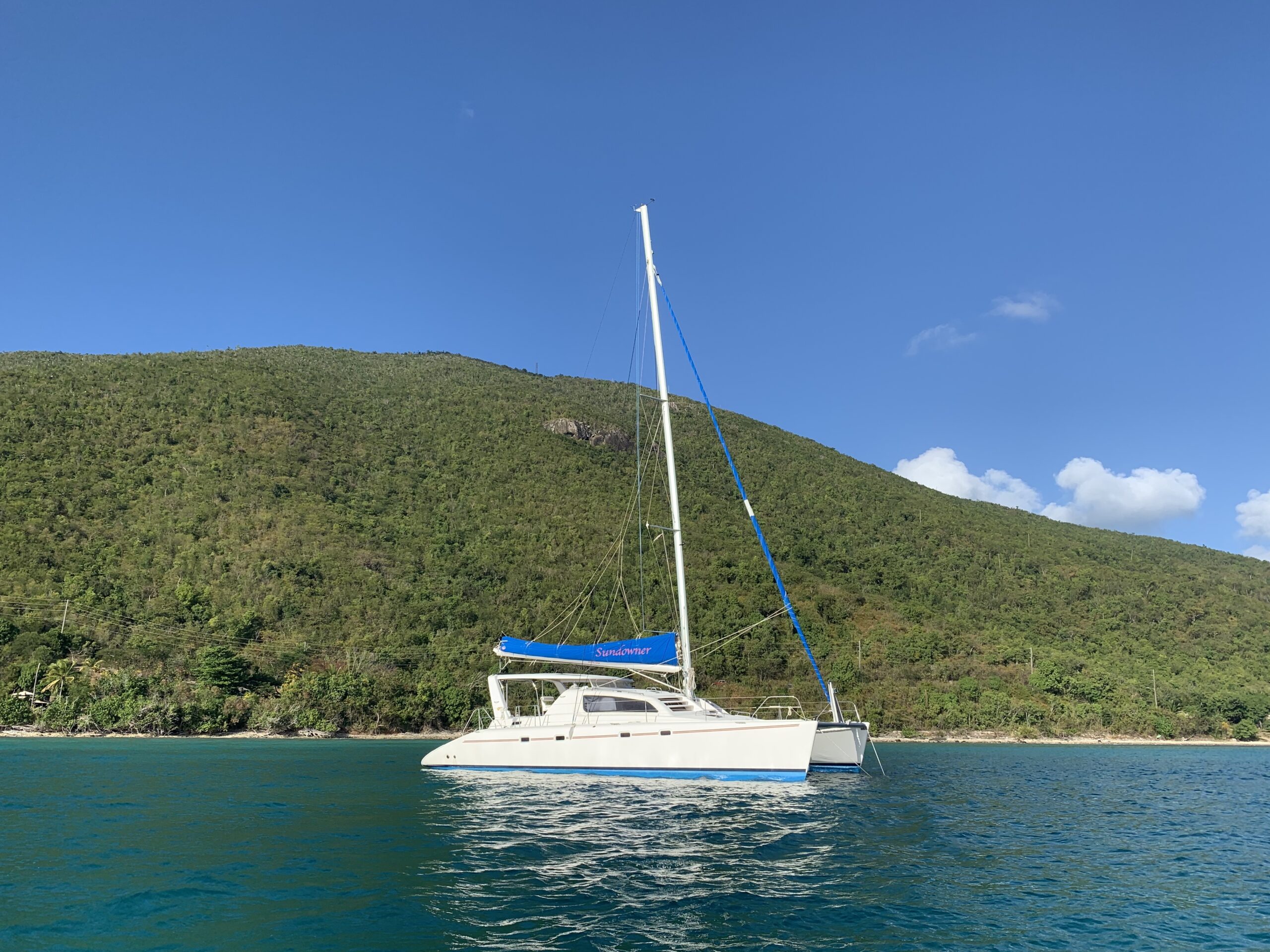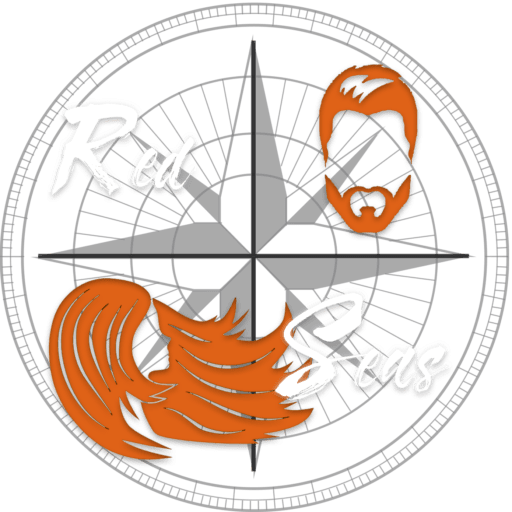
What Rig does Indioko have?
Catamaran sail plans can be fantastically complex; everything from standard sloop rigs, cutters, rotating masts and even ketch rigs have been tested and each with their own merits and shortcomings. But what about Indioko?
The Leopard 47 operates a standard sloop rig format consisting of a main sail with 3 reefing points (only reef 1 and 2 are rigged) and a 135% Genoa on a rolling furler. Along with an ancient and very stained symmetrical spinnaker, we have recently installed our version of a bow sprit which we are very excited to test out with a large Genoa we were given from a much larger catamaran.
There is a real focus on simplicity in how Indioko has been rigged. The main halyard, topping lift and reefing lines are all led to the foot of the mast where we have two lewmar 46 self tailing winches. Rather than single line reefing that would be very heavy and require extra long lines to manage, the reefs are taken with a single line to the leech and a static clip at the mast next to the winches. As each reef is taken in, the leading edge of the sail is secured to the mast with a short dyneema line and clip while the aft section is hauled in using a reefing line fed to the starboard mast winch.
One neat trick that Robertson and Caine designed into Indi was the placement of the anchor windlass. It has been placed perfectly for the main halyard to be run down from the mast directly to the line side of the lofran tigress windlass. This means we can use the windlass as an electric winch to raise the mainsail. This trick was invaluable as we got to know the boat and we were actually shown it by the original delivery skipper who joined us for a sea trial.
The 135% Genoa is controlled by a large Profurl unit which is controlled from the cockpit with a smaller winch that doubles as a winch for the main sheet traveler control. We think of the Genoa as the accelerator in a car. The more we have out and the better the sail shape, the faster we go. There are two sheets that run from the Genoa to a port and starboard winch pair that are mounted on the coach roof just in front of the cockpit. We can easily make Genoa adjustments from the cockpit and have on occasion led the port Genoa sheet across the coach roof to the starboard winch to make single hand tacking and furling a little easier.
Finally, the Main sail sheet system is a little different (and a little pointless in our opinion). Unlike many sailboats where the main sheet comes back to a single point and can be controlled by hand or with the help of a winch, the Leopard 47 uses something we believe to be called the Dutch System. This is basically a system where the main sheet can be adjusted from either side of the cockpit. It achieves this by running the sheet from one winch on the starboard side, to the foot of the mast where it passes through a deck mounted block, then along the boom to a block that feeds down to the traveler car. From there it goes back up to the boom along to the mast and through a second deck mounted block which feeds it to the port cockpit winch. In theory this means you can adjust the main sheet from either side of the cockpit by simply letting out or taking in the sheet tail that you have in front of you. In practice, we have found that we only make these adjustments from the starboard side at the helm. You can see the logic of it but we just dont want to find outselves feeding out sheet only to find that it has collected at the other winch through regular use.
So that’s it, the basic run through of a Leopard 47 sail rig with a few extras thrown in. Let us know in the comments if you would like a breakdown of how we fly the spinnaker onboard with maximum adjustability. It’s a treat to fly and wonderfully complicated to explain.



